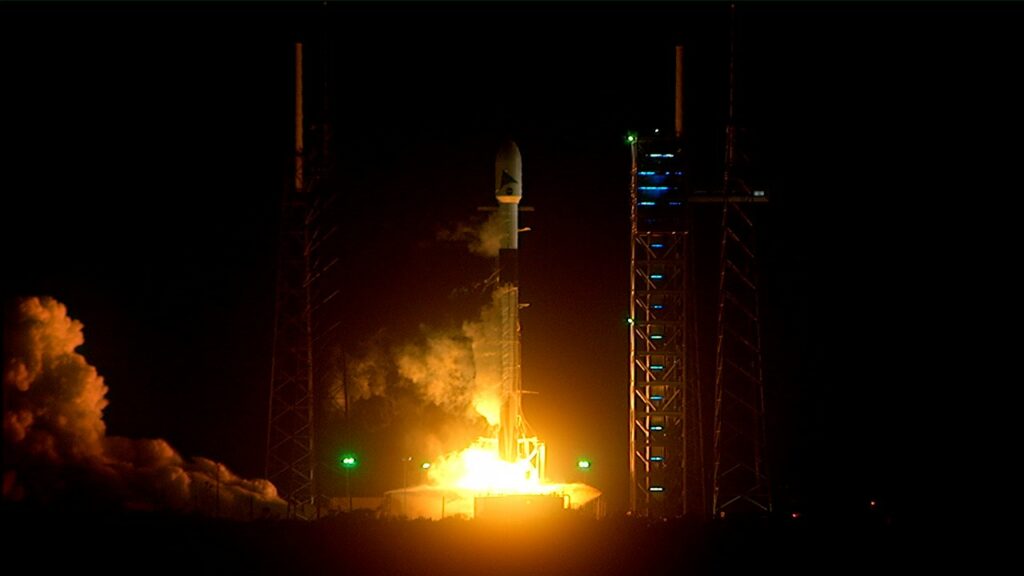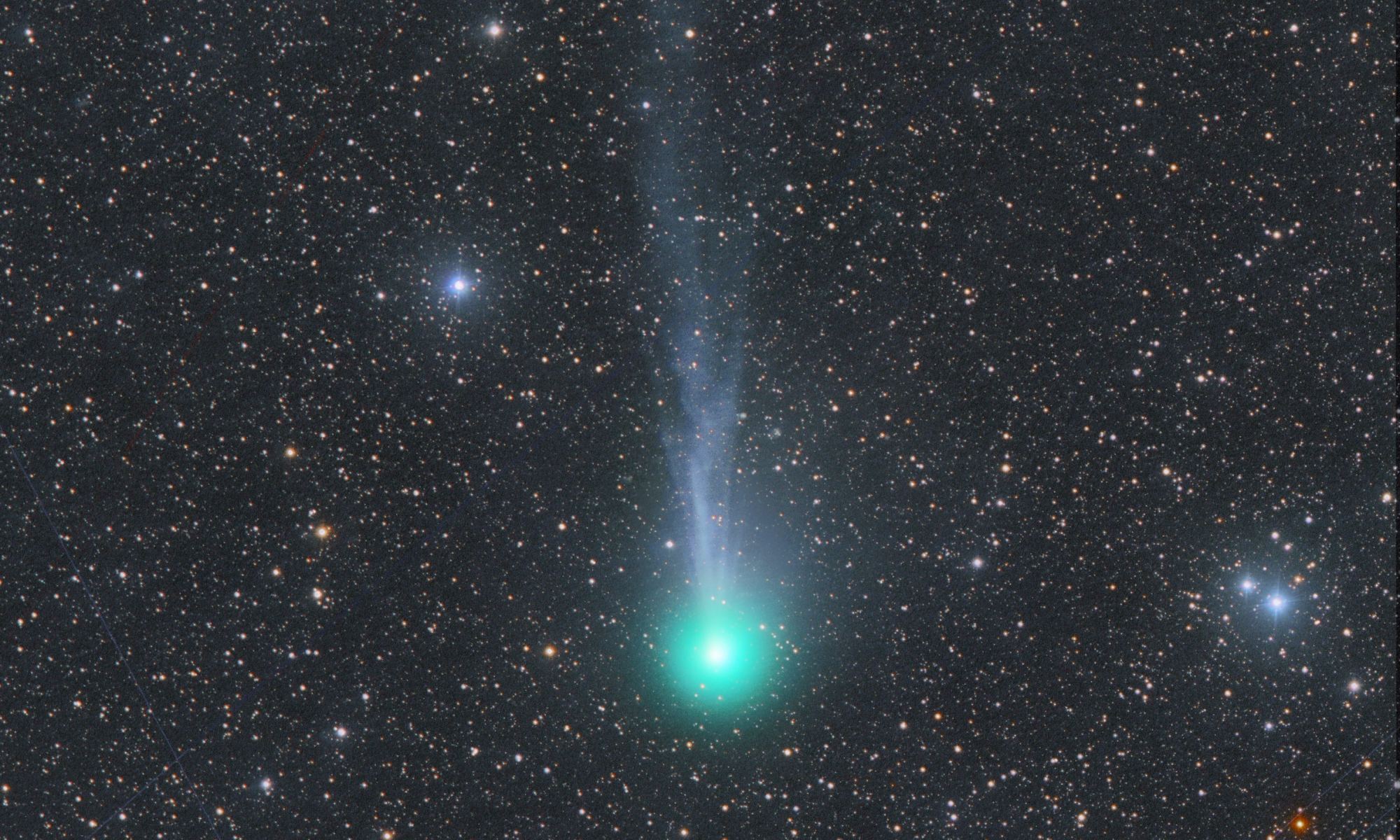NASA’s Plankton, Aerosol, Climate, ocean Ecosystem (PACE) satellite successfully launched and reached on Thursday, February 10th. The mission took off from Space Launch Complex 40 at Cape Canaveral Space Force Station in Florida, at 1:33 am EST 10:33 pm (PST) atop a SpaceX Falcon 9 rocket. About five minutes after launch, NASA confirmed that ground stations on Earth had acquired a signal from the satellite and were receiving data on its operational status and capabilities post-launch. For the next three years, the mission will monitor Earth’s ocean and atmosphere and study the effects of climate change.
Continue reading “NASA Launches a New Mission to Study the Effects of Climate Change”Fragments From That Asteroid That Exploded Above Berlin Have Been Recovered and They're Really Special
On January 21st, 2024, a meter-sized asteroid (2024 BX1) entered Earth’s atmosphere and exploded over Berlin at 12:33 am UTC (07:45 pm EST; 04:33 pm PST). Before it reached Earth, 2024 BX1 was a Near-Earth Asteroid (NEA) with an orbit that suggests it was part of the Apollo group. The fragments have since been located by a team of scientists from the Freie Universität Berlin, the Museum für Naturkunde (MfN), the German Aerospace Center (DLR), the Technische Universität Berlin, and the SETI Institute and identified as a rare type of asteroid known as “aubrites.”
Continue reading “Fragments From That Asteroid That Exploded Above Berlin Have Been Recovered and They're Really Special”The Comet vs. the Eclipse: 12P/Pons-Brooks Heads Towards Perihelion in April
Comet 12P Pons-Brooks takes center stage this Spring.
Something is definitely up with the 12th periodic comet in the catalog. We’re talking about Comet 12P Pons-Brooks, set to reach the first of two perihelia for the 21st century this Spring. And the timing couldn’t be better, as the comet will also sit near the Sun just two weeks prior during the total solar eclipse of April 8th 2024, spanning the North American continent from the southwest to the northeast. If the comet over-performs—a long shot, but multiple outbursts in 2023 suggest it just might—we could be in for the added treat of a naked eye comet near the Sun during totality.
Continue reading “The Comet vs. the Eclipse: 12P/Pons-Brooks Heads Towards Perihelion in April”NASA’s Juno Probe Makes Another Close Flyby of Io
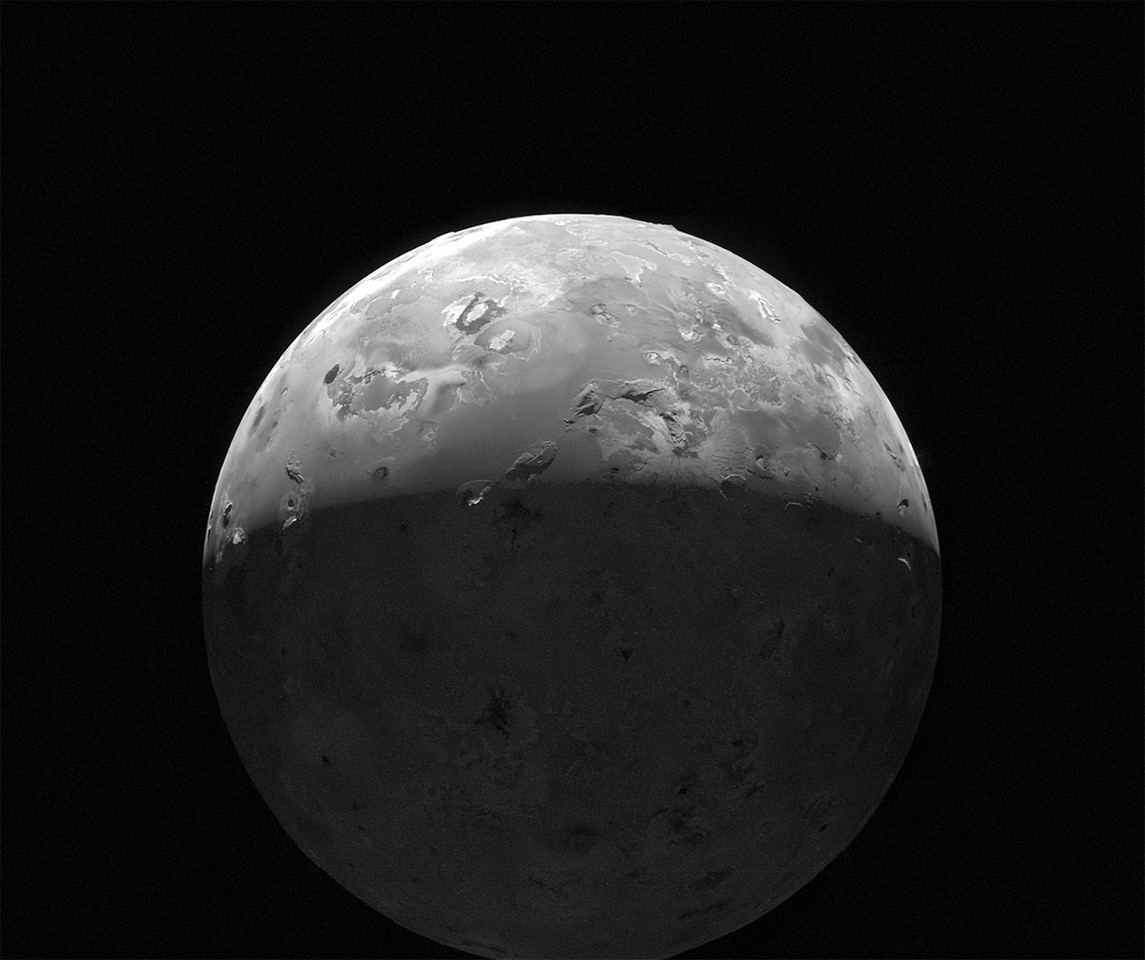
The Juno spacecraft has revealed some fascinating things about Jupiter since it began exploring the system on July 4th, 2016. Not only is it the first robotic mission to study Jupiter up close while orbiting it since the Galileo spacecraft, which studied the gas giant and its satellites from 1995 to 2003. Juno is also the first robotic explorer to look below Jupiter’s dense clouds to investigate the planet’s magnetic field, composition, and structure. The data this has produced is helping scientists address questions about how Jupiter formed and the origins of the Solar System.
Since 2021, the probe has been in an extended mission phase, where it has been making flybys of some of Jupiter’s largest moons, including Ganymede, Europa, and Io. As it passes these satellites, Juno has captured some incredible images with its main imaging instrument, the JunoCam. On Saturday, February 3rd, 2024, the Juno spacecraft made another flyby of Io and took more captivating photos of the volcanic moon and its pockmarked surface. This was the second part of a twin flyby designed to provide new insight into Io’s volcanic nature and the interior structure of the satellite.
Continue reading “NASA’s Juno Probe Makes Another Close Flyby of Io”Astronomers are Getting Really Good at Weighing Baby Supermassive Black Holes

In the 1970s, astronomers deduced that the persistent radio source coming from the center of our galaxy was actually a supermassive black hole (SMBH). This black hole, known today as Sagittarius A*, is over 4 million solar masses and is detectable by the radiation it emits in multiple wavelengths. Since then, astronomers have found that SMBHs reside at the center of most massive galaxies, some of which are far more massive than our own! Over time, astronomers observed relationships between the properties of galaxies and the mass of their SMBHs, suggesting that the two co-evolve.
Using the GRAVITY+ instrument at the Very Large Telescope Interferometer (VLTI), a team from the Max Planck Institute for Extraterrestrial Physics (MPE) recently measured the mass of an SMBH in SDSS J092034.17+065718.0. At a distance of about 11 billion light-years from our Solar System, this galaxy existed when the Universe was just two billion years old. To their surprise, they found that the SMBH weighs in at a modest 320 million solar masses, which is significantly under-massive compared to the mass of its host galaxy. These findings could revolutionize our understanding of the relationship between galaxies and the black holes residing at their centers.
Continue reading “Astronomers are Getting Really Good at Weighing Baby Supermassive Black Holes”Asteroid Ryugu Contained Bonus Comet Particles

On December 5th, 2020, Japan’s Hayabusa2 mission successfully returned samples it had collected from the Near-Earth Asteroid (NEA) 162173 Ryugu home. Since asteroids are basically leftover material from the formation of the Solar System, analysis of these samples will provide insight into what conditions were like back then. In particular, scientists are interested in determining how organic molecules were delivered throughout the Solar System shortly after its formation (ca. 4.6 billion years ago), possibly offering clues as to how (and where) life emerged.
The samples have already provided a wealth of information, including more than 20 amino acids, vitamin B3 (niacine), and interstellar dust. According to a recent study by a team of Earth scientists from Tohoku University, the Ryugu samples also showed evidence of micrometeoroid impacts that left patches of melted glass and minerals. According to their findings, these micrometeoroids likely came from other comets and contained carbonaceous materials similar to primitive organic matter typically found in ancient cometary dust.
Continue reading “Asteroid Ryugu Contained Bonus Comet Particles”Six Planets Found Orbiting an Extremely Young Star
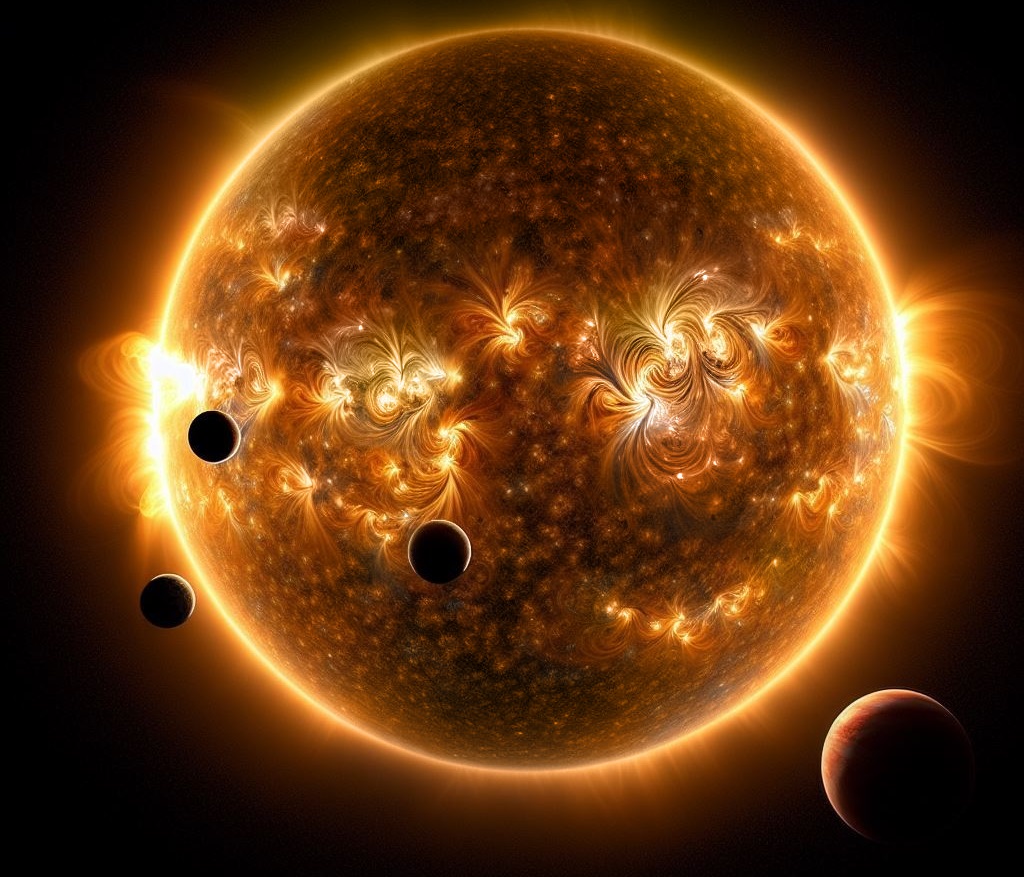
The field of exoplanet study continues to grow by leaps and bounds. As of the penning of this article, 5,572 extrasolar planets have been confirmed in 4,150 systems (with another 10,065 candidates awaiting confirmation. Well, buckle up because six more exoplanets have been confirmed around TOI-1136, a Sun-like star located roughly 276 light-years from Earth. This star is less than 700 million years old, making it relatively young compared to our own (4.6 billion years). This system will allow astronomers to observe how systems like our own have evolved with time.
Continue reading “Six Planets Found Orbiting an Extremely Young Star”A Magnetohydrodynamic Drive Could Lead to Fuel Stations on Mars
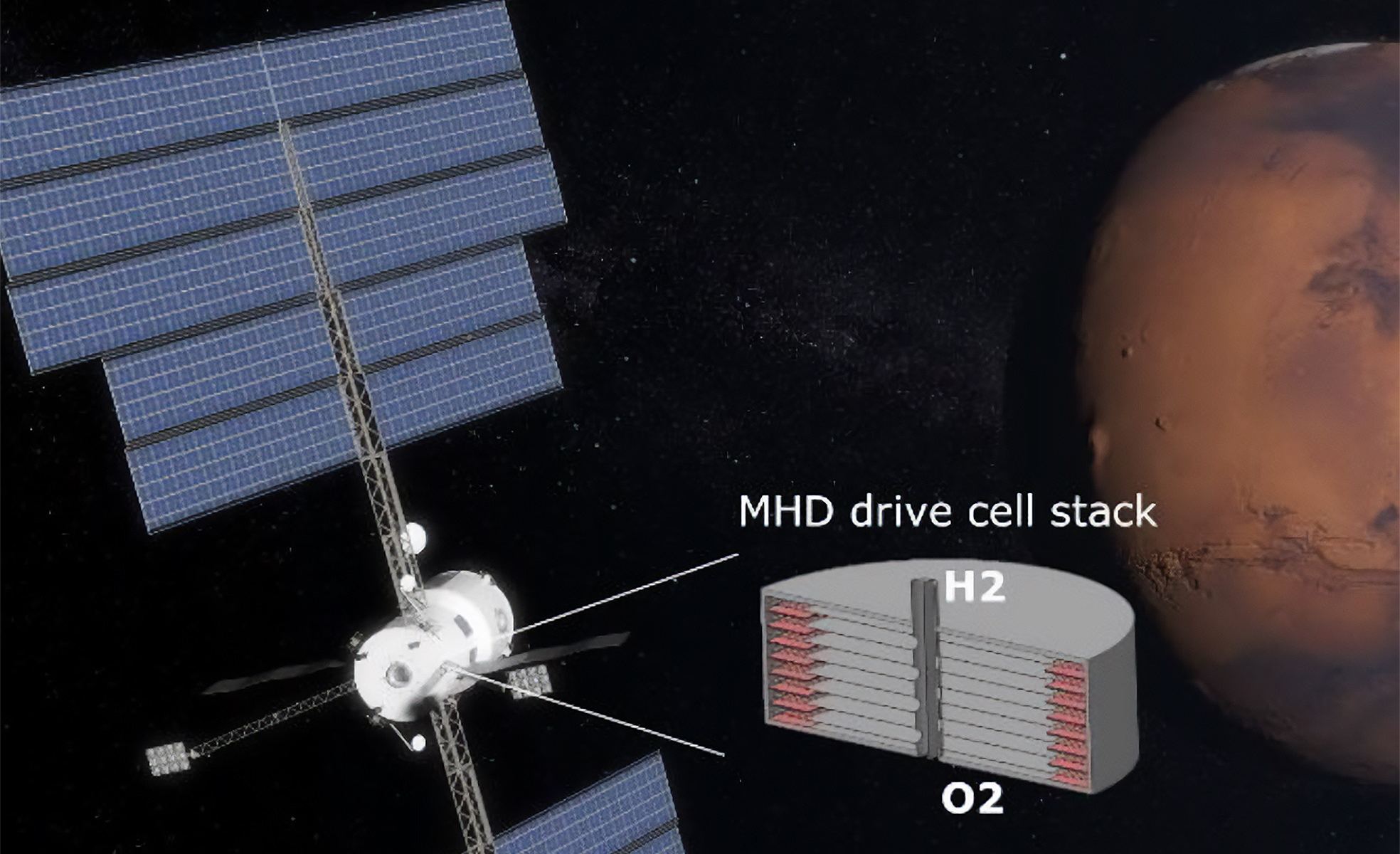
Within the next fifteen years, NASA, China, and SpaceX plan to send the first crewed missions to Mars. In all three cases, these missions are meant to culminate in the creation of surface habitats that will allow for many returns and – quite possibly – permanent human settlements. This presents numerous challenges, one of the greatest of which is the need for plenty of breathable air and propellant. Both can be manufactured through electrolysis, where electromagnetic fields are applied to water (H2O) to create oxygen gas (O2) and liquid hydrogen (LH2).
While Mars has ample deposits of water ice on its surface that make this feasible, existing technological solutions fall short of the reliability and efficiency levels required for space exploration. Fortunately, a team of researchers from Georgia Tech has proposed a “Magnetohydrodynamic Drive for Hydrogen and Oxygen Production in Mars Transfer” that combines multiple functionalities into a system with no moving parts. This system could revolutionize spacecraft propulsion and was selected by NASA’s Innovative Advanced Concepts (NIAC) program for Phase I development.
Continue reading “A Magnetohydrodynamic Drive Could Lead to Fuel Stations on Mars”NASA Wants to Put a Massive Telescope on the Moon
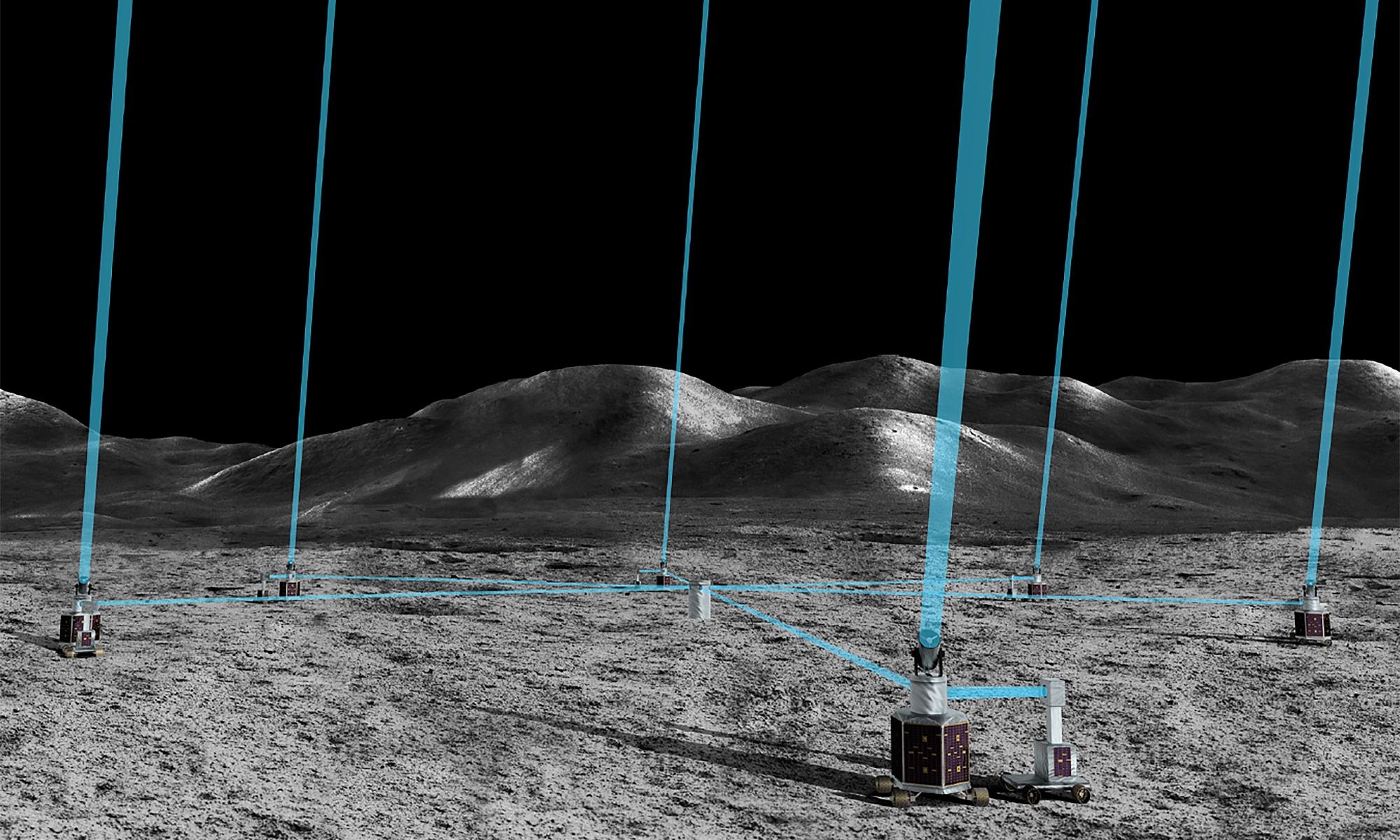
As part of the Artemis Program, NASA intends to establish all the necessary infrastructure to create a “sustained program of lunar exploration and development.” This includes the Lunar Gateway, an orbiting habitat that will enable regular trips to and from the surface, and the Artemis Base Camp, which will permit astronauts to remain there for up to two months. Multiple space agencies are also planning on creating facilities that will take advantage of the “quiet nature” of the lunar environment, which includes high-resolution telescopes.
As part of this year’s NASA Innovative Advance Concepts (NIAC) Program, a team from NASA’s Goddard Space Flight Center has proposed a design for a lunar Long-Baseline Optical Imaging Interferometer (LBI) for imaging at visible and ultraviolet wavelengths. Known as the Artemis-enabled Stellar Imager (AeSI), this proposed array of multiple telescopes was selected for Phase I development. With a little luck, the AeSI array could be operating on the far side of the Moon, taking detailed images of stellar surfaces and their environments.
Continue reading “NASA Wants to Put a Massive Telescope on the Moon”New Webb Image of a Massive Star Forming Complex
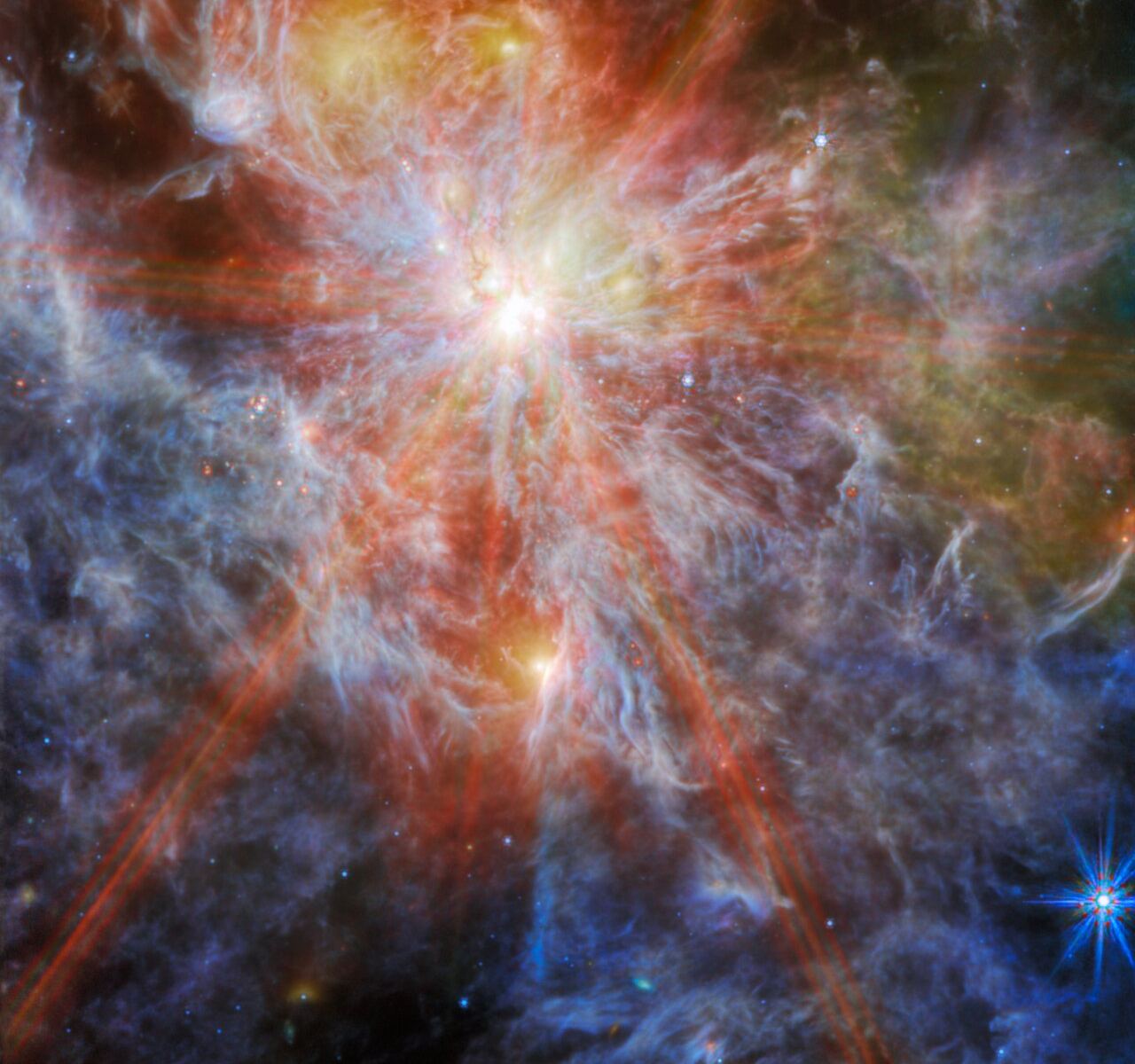
The James Webb Space Telescope, a collaborative effort between NASA, the ESA, and the Canadian Space Agency (CSA), has revealed some stunning new images of the Universe. These images have not only been the clearest and most details views of the cosmos; they’ve also led to new insight into cosmological phenomena. The latest image, acquired by Webb‘s Mid-InfraRed Instrument (MIRI), is of the star-forming nebula N79, located about 160,000 light-years away in the Large Magellanic Cloud (LMC). The image features a bright young star and the nebula’s glowing clouds of dust and gas from which new stars form.
Continue reading “New Webb Image of a Massive Star Forming Complex”
